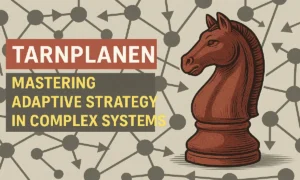Earthquakes are among the most devastating natural disasters, causing widespread destruction to buildings, infrastructure, and entire communities. For a country like Japan, situated on the Pacific Ring of Fire, earthquakes are not just a risk but a constant reality.
However, the damage caused by an earthquake goes beyond physical destruction—it can have profound psychological impacts on survivors, often leading to long-term emotional and mental health challenges.
In this article, we will explore the critical work of Yuan Numa, a leading expert in earthquake resilience. His research focuses on the integration of both physical and mental resilience in disaster preparedness and recovery.
By understanding Numa’s findings, we can gain valuable insights into how Japan is enhancing its ability to not only survive earthquakes but to recover and rebuild stronger communities. Lets dive In!
The Impact of Earthquakes on Japan
Earthquakes are not just a natural disaster; they are a daily threat for Japan. The country is located on the Pacific Ring of Fire, an area known for its seismic activity.
Throughout history, Japan has faced numerous catastrophic earthquakes that have caused widespread destruction. The Great Kanto Earthquake of 1923 and the Tohoku earthquake in 2011 are some of the most well-known events.
These earthquakes cause significant damage to buildings, infrastructure, and homes. However, the lasting effects on the emotional and psychological well-being of survivors are often just as damaging, if not more so.
The trauma caused by the loss of loved ones, homes, and livelihoods can persist for years, with depression being a common outcome.
In response to these challenges, Japan has made remarkable strides in improving earthquake resilience, especially in terms of infrastructure and preparedness.
Yet, there is still much work to be done in addressing the mental health challenges that survivors face. This is where Yuan Numa’s research has played a critical role.
Yuan Numa’s Contribution to Earthquake Resilience

Yuan Numa’s research stands out because it blends technical and psychological approaches to earthquake resilience.
His work is widely acknowledged and referenced on platforms like Google Scholar, where numerous articles highlight his interdisciplinary research. Numa’s studies touch on the intersection of engineering, urban planning, public policy, and mental health.
Numa’s contributions are vast, but his focus on both physical and mental resilience sets his work apart. In terms of physical resilience, Numa has explored the development of earthquake-resistant structures and the evolution of Japan’s building codes.
These improvements have made cities safer and better equipped to withstand seismic events. However, Numa emphasizes that true resilience is not just about constructing stronger buildings; it’s also about building stronger communities.
The Psychological Toll: Depression Among Survivors
While physical damage from earthquakes is immediately visible, the emotional and psychological effects can linger far longer.
Survivors often struggle with depression, which is a common psychological response to disaster. The loss of loved ones, the destruction of homes, and the trauma experienced during the event can all contribute to this.
Yuan Numa’s research focuses heavily on understanding how individuals cope with these psychological effects.
He advocates for early mental health interventions in the aftermath of a disaster, arguing that failure to address mental health issues can lead to long-term depression and hinder recovery efforts.
Studies have shown that survivors who do not receive adequate mental health support after an earthquake are more likely to experience chronic depression, which can last for years.
Numa’s work stresses that mental health services should be an integral part of disaster response plans, as they can make a significant difference in the recovery process.
Community Resilience: The Role of Social Support Networks

In addition to focusing on individual mental health, Numa’s research highlights the importance of community-level resilience. One of the key factors that contribute to community resilience is social cohesion.
Communities with strong bonds are able to support their members better during times of crisis.
Social support networks, such as family and friends, play a crucial role in helping individuals recover from the psychological effects of a disaster.
Numa’s research indicates that people who have access to a solid support network are less likely to experience severe depression.
Local leadership also plays a significant role in community resilience. Effective local leaders can help mobilize resources and provide emotional support to survivors.
Numa’s studies suggest that communities that have strong, engaged leaders are better equipped to recover from disasters.
Breaking the Stigma Around Mental Health in Japan
One of the challenges Japan faces in addressing mental health issues is the cultural stigma surrounding mental health, especially in rural areas. Many individuals are reluctant to seek help due to the shame associated with mental health issues like depression.
Numa’s research explores this cultural barrier and calls for greater public awareness campaigns to reduce the stigma surrounding mental health. He argues that mental health services need to be more accessible and normalized, particularly in disaster-stricken areas.
By making mental health support more available and less stigmatized, Japan can better help survivors of earthquakes cope with depression and trauma.
Long-Term Recovery: The Need for Ongoing Mental Health Support
Yuan Numa’s research emphasizes that the recovery process does not end immediately after the physical destruction is cleared away.
Depression and other mental health issues can persist for years, and it is essential for survivors to continue receiving mental health support long after the disaster.
In his studies, Numa documents numerous cases where survivors struggled with depression long after an earthquake. This long-term impact highlights the need for ongoing mental health services.
Numa advocates for a continuous support system, one that lasts for years after the disaster to help individuals reintegrate into society and recover from the psychological wounds they sustained.
A Holistic Approach to Earthquake Resilience

Based on his findings, Numa calls for a more holistic approach to earthquake resilience. This approach should not only focus on physical infrastructure but also on mental health support and community resilience.
By integrating mental health interventions into disaster preparedness, response, and recovery plans, Japan can build a more resilient society, better equipped to handle future earthquakes.
Key components of this holistic approach include:
- Early mental health interventions: Psychological support should be provided alongside traditional emergency services to ensure that survivors receive the care they need from the very beginning.
- Community empowerment: Local communities should be involved in disaster response plans, including mental health strategies, to ensure that support is available at the grassroots level.
- Long-term mental health services: Continued support is necessary, as depression and trauma can affect survivors for many years after the initial disaster.
Conclusion
Yuan Numa’s research offers valuable insights into how Japan can improve its earthquake resilience strategies. While the country has made significant progress in mitigating physical damage from earthquakes, addressing the psychological toll is equally important.
Through his work, Numa has shown that mental health support must be an integral part of disaster recovery efforts.
By integrating psychological care into the recovery process and reducing the stigma surrounding mental health, Japan can create a more resilient society that is better prepared to face future earthquakes.
Stay with us to discover more articles on saohrizon.
FAQs
What are Yuan Numa’s key contributions to earthquake resilience?
Yuan Numa’s contributions include improving Japan’s earthquake-resistant building codes and advocating for the integration of mental health support into disaster recovery plans.
Why is depression common among earthquake survivors?
Depression is common due to the trauma of losing loved ones, homes, and livelihoods, combined with prolonged periods of uncertainty and fear. These emotional stressors can have lasting psychological effects on survivors.
How can communities help in earthquake recovery?
Communities with strong social bonds, local leadership, and access to community-based mental health programs recover faster and more effectively. Social support networks play a crucial role in reducing depression and improving mental health outcomes.
What are the long-term effects of untreated depression after an earthquake?
Untreated depression can lead to chronic mental health issues, making it harder for survivors to return to their normal lives. This can slow down overall recovery and impede the rebuilding of communities.
How does cultural stigma affect mental health care in Japan?
Cultural stigma around depression and mental health problems prevents many individuals, especially in rural areas, from seeking the help they need.












